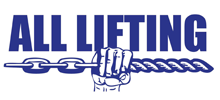
PULLEYS USAGE
Pulleys are devices with wheels and a fixed axis supporting a rope that goes around. They are used to help when there are massive weights to be lifted as these devices will help you to make your lifting process easier and quicker so you do not need to break your back and you can complete your lift in a smooth manner.
A pulley can effectively multiply the force applied. There are different types of pulleys which can be one, two, three and four wheels, which means that the more wheels you have, and the more times you loop the rope around them, the more weight you can lift. However, there are ways to cut this load even more by combining fixed pulleys, making the pulley movable, or combining fixed and movable pulleys into a compound pulley.
You can find similarities between a pulley and a snatch block; in fact, they are both pulleys that can help and assist to make your lift easier. Generally, in construction sites these pulleys are very handy, as they allow workers to access equipment that is being lifted constantly going up and down while assisting to carry all the materials or tools that workers require to perform jobs at different levels.
Pulleys can also be found in different industries to help make tasks easier. In addition to lifting things, pulleys can be used singularly or with many pulleys working together to help workers to transport people or tools. These types of devices might be found in different applications as well; here is a list of the many ways a pully could be used:
- Elevators
- Blinds on windows
- Flagpoles
- Birdfeeders
- Roofers
- Big engines
- Bulldozers
- Oil derricks
- Garage doors
- Rock climbers
- Automotive
- Electric escalators
- Some exercise or sport equipment
- Theatres (to open and close curtains)
At All Lifting we offer a great range of pulleys, snatch blocks and other lifting equipment that complies to Australian standards. If you are looking into buying a pulley and you need any advice, please don’t hesitate to contact us and one of our lifting and rigging specialists will be able to help you.



